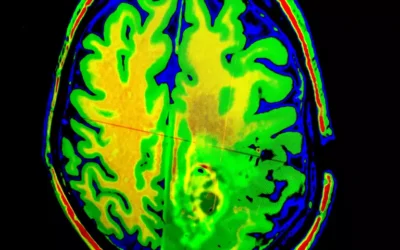Who was Herbert Silberer?

Herbert Silberer (1882-1923) was an Austrian psychoanalyst, author, and researcher who made significant contributions to the fields of psychoanalysis, dream interpretation, and the psychology of alchemy during the early 20th century. Despite his relatively short life, Silberer left an indelible mark on the history of psychology, offering groundbreaking insights into the nature of the unconscious mind, the meaning of dreams, and the relationship between psychology and esotericism. His innovative ideas and original research continue to inspire and influence scholars and practitioners across various disciplines, from depth psychology and psychotherapy to cultural studies and the history of science.
In this comprehensive essay, we will embark on a thorough exploration of Silberer’s key theoretical contributions, his pioneering research on dreams and alchemy, and his lasting impact on the development of psychoanalytic thought. By engaging with Silberer’s work, we aim to shed light on the enduring significance of his ideas for our understanding of the human psyche and the rich symbolic world of the unconscious.
-
Silberer’s Theoretical Contributions to Psychoanalysis
2.1. The Functional Phenomenon in Dreams
One of Silberer’s most notable contributions to psychoanalytic theory is his concept of the “functional phenomenon” in dreams. According to Silberer, dreams not only express repressed wishes and unconscious conflicts, as Freud had proposed, but also serve a problem-solving function, allowing the dreamer to work through and resolve internal dilemmas and emotional challenges. Silberer observed that many dreams contain symbolic representations of the dreamer’s current psychological state, as well as potential solutions or outcomes to the problems they face.
This functional aspect of dreams, Silberer argued, is often embodied in what he called “autosymbolic phenomena” – dream images and narratives that metaphorically depict the dreamer’s own mental processes, such as thinking, remembering, or decision-making. By recognizing and interpreting these autosymbolic elements, Silberer believed that psychoanalysts could gain valuable insights into their patients’ inner worlds and help them navigate the complexities of their psychic lives.
2.2. The Anagogic Interpretation of Dreams
Building on his concept of the functional phenomenon, Silberer proposed an innovative approach to dream interpretation, which he termed the “anagogic method”. This method aimed to uncover the higher, spiritual meanings of dreams, beyond their personal and psychological significance. Silberer believed that dreams not only reflect the individual dreamer’s unconscious mind but also tap into universal, archetypal themes and symbols that connect us to a collective spiritual reality.
The anagogic interpretation of dreams involves looking beyond the manifest content and the dreamer’s personal associations, and instead focusing on the dream’s underlying symbolic structure and its relationship to mythological, religious, and esoteric traditions. By doing so, Silberer argued, psychoanalysts could help their patients access a deeper level of self-understanding and connect with the transpersonal dimensions of their being.
This approach to dream interpretation has had a significant influence on the development of Jungian psychology and other depth-psychological approaches that emphasize the spiritual and archetypal aspects of the psyche. It has also contributed to the growing dialogue between psychoanalysis and esotericism, opening up new avenues for interdisciplinary research and exploration.
-
Silberer’s Research on Alchemy and Psychology
3.1. The Psychoanalytic Interpretation of Alchemical Symbols
In addition to his work on dreams, Silberer is perhaps best known for his groundbreaking research on the psychological significance of alchemy. In his seminal book “Problems of Mysticism and Its Symbolism” (1914), Silberer applied psychoanalytic concepts and methods to the study of alchemical texts and images, arguing that they represent a rich source of insight into the workings of the unconscious mind.
Silberer proposed that alchemical symbols, such as the philosopher’s stone, the hermaphrodite, and the chemical wedding, are not merely obscure, archaic references, but rather powerful psychological metaphors that express universal human experiences and developmental processes. He interpreted the alchemical quest for the transmutation of base metals into gold as a symbolic representation of the individual’s journey towards self-knowledge, integration, and spiritual enlightenment.
By deciphering the psychological meaning of alchemical symbols and narratives, Silberer sought to demonstrate the relevance of this ancient esoteric tradition for modern psychology and psychotherapy. His work laid the foundation for the psychoanalytic study of alchemy and inspired generations of scholars, including Carl Jung, Marie-Louise von Franz, and Mircea Eliade, to explore the rich symbolic world of this fascinating discipline.
3.2 Alchemy as a Metaphor for Psychic Transformation
Central to Silberer’s interpretation of alchemy is the idea that the alchemical process of transmutation serves as a metaphor for the transformation of the human psyche. Just as the alchemist seeks to purify and perfect matter, the individual must work to confront, integrate, and transcend the raw, chaotic, and often unconscious elements of their own psyche in order to achieve greater self-awareness, wholeness, and spiritual realization.
Silberer argued that the various stages of the alchemical opus, such as nigredo (blackening), albedo (whitening), and rubedo (reddening), correspond to specific phases of psychological development and self-transformation. For example, the nigredo, which involves the putrefaction and dissolution of matter, can be seen as a metaphor for the breakdown of the ego and the confrontation with the shadow aspects of the psyche. The albedo, characterized by purification and enlightenment, represents the emergence of a new, more integrated sense of self. And the rubedo, the final stage of the opus, symbolizes the attainment of wholeness, self-realization, and union with the divine.
By elucidating the psychological significance of these alchemical processes, Silberer provided a powerful framework for understanding the dynamics of psychic transformation and the challenges and opportunities involved in the journey towards self-knowledge and personal growth. His insights have had a lasting impact on the development of depth psychology and have inspired new approaches to psychotherapy that emphasize the transformative power of the unconscious and the importance of integrating spiritual and archetypal dimensions of experience.
-
The Influence of Silberer’s Ideas on Depth Psychology and Psychotherapy
4.1. Silberer and the Development of Jungian Psychology
Silberer’s pioneering work on dreams, alchemy, and the psychology of symbols had a profound influence on the development of Carl Jung’s analytical psychology. Jung himself acknowledged Silberer as a key inspiration for his own research on the collective unconscious, archetypes, and the process of individuation. In particular, Silberer’s concept of the anagogic interpretation of dreams and his elucidation of the psychological significance of alchemical symbols played a crucial role in shaping Jung’s understanding of the transpersonal dimensions of the psyche and the role of mythology, religion, and esotericism in psychological development.
Jung’s theory of archetypes, which posits the existence of universal, inherited patterns of psychic experience, owes much to Silberer’s insights into the symbolic language of dreams and the collective significance of alchemical imagery. Similarly, Jung’s emphasis on the process of individuation, the lifelong journey towards self-realization and wholeness, echoes Silberer’s understanding of alchemy as a metaphor for psychic transformation and the integration of unconscious elements into the conscious personality.
Silberer’s influence on Jungian psychology can also be seen in the work of later analysts and scholars, such as Marie-Louise von Franz, Edward Edinger, and James Hillman, who have continued to explore the rich symbolic world of alchemy and its relevance for contemporary psychology and spirituality. By bringing together the insights of psychoanalysis, esotericism, and comparative mythology, these thinkers have carried forward Silberer’s legacy and expanded our understanding of the complex, multidimensional nature of the human psyche.
4.2. Silberer’s Contributions to the Dialogue between Psychoanalysis and Esotericism
In addition to his influence on Jungian psychology, Silberer’s work has also played a significant role in fostering the dialogue between psychoanalysis and esotericism. By demonstrating the psychological significance of alchemical symbols and the relevance of esoteric traditions for the understanding of the unconscious mind, Silberer opened up new avenues for interdisciplinary research and exploration.
His insights have inspired a growing body of scholarship that seeks to bridge the gap between the scientific study of the psyche and the spiritual and philosophical wisdom of the world’s great esoteric traditions. This includes the work of scholars such as Mircea Eliade, Henry Corbin, and Stanislav Grof, who have explored the relationship between psychology, mysticism, and the perennial philosophy.
Silberer’s contributions to this dialogue have also had important implications for the practice of psychotherapy. By highlighting the transformative power of symbols and the importance of integrating spiritual and archetypal dimensions of experience, Silberer’s work has encouraged the development of new therapeutic approaches that recognize the holistic, multidimensional nature of the human psyche. These approaches, which include transpersonal psychology, psychosynthesis, and holotropic breathwork, aim to facilitate the process of self-discovery and personal growth by tapping into the healing potential of the unconscious and the wisdom of the world’s spiritual traditions.
4.3. The Relevance of Silberer’s Ideas for Contemporary Psychology and Psychotherapy
Despite the passage of time and the many advances in psychological research and practice, Silberer’s ideas continue to resonate with contemporary scholars and clinicians. His emphasis on the transformative power of symbols, the importance of integrating unconscious and spiritual dimensions of experience, and the relevance of esotericism for the understanding of the human psyche remain as relevant today as they were a century ago.
In particular, Silberer’s work has important implications for the growing field of integrative and holistic approaches to mental health and well-being. By recognizing the complex, multidimensional nature of the psyche and the importance of addressing the whole person – body, mind, and spirit – these approaches seek to promote healing and growth in a more comprehensive and sustainable way.
Silberer’s insights into the psychological significance of dreams, myths, and esoteric traditions also have much to offer contemporary research on the nature of consciousness, the mind-body relationship, and the role of spirituality in mental health. His pioneering work on the anagogic interpretation of dreams and the transformative power of alchemical symbols anticipates recent developments in fields such as cognitive neuroscience, psychoneuroimmunology, and the study of non-ordinary states of consciousness.
As psychology continues to evolve and embrace a more integrative and interdisciplinary approach, Silberer’s legacy will undoubtedly continue to inspire new generations of scholars and practitioners. By engaging with his work and building on his insights, we can deepen our understanding of the human psyche and develop more effective and holistic approaches to healing and self-transformation.
-
Brief Career, Long Legacy
5.1. Silberer’s Enduring Legacy in Psychology and Beyond
Herbert Silberer’s contributions to psychology, dream interpretation, and the study of alchemy have left an indelible mark on the history of ideas. His innovative concepts, such as the functional phenomenon in dreams and the anagogic method of interpretation, have expanded our understanding of the unconscious mind and the transformative power of symbols. His groundbreaking research on the psychological significance of alchemical imagery has opened up new avenues for interdisciplinary exploration and fostered a rich dialogue between psychoanalysis and esotericism.
Silberer’s influence can be seen in the work of many prominent thinkers, from Carl Jung and Mircea Eliade to contemporary scholars and clinicians who continue to explore the frontiers of psychology, spirituality, and human potential. His ideas have inspired new approaches to psychotherapy that recognize the holistic, multidimensional nature of the psyche and the importance of integrating unconscious and archetypal dimensions of experience.
Beyond the field of psychology, Silberer’s legacy has also had a significant impact on the broader intellectual and cultural landscape. His work has contributed to the growing interest in esotericism, comparative mythology, and the perennial philosophy, and has helped to bridge the gap between science and spirituality. His insights into the transformative power of symbols and the relevance of ancient wisdom traditions for modern life continue to inspire individuals from all walks of life who are seeking greater self-understanding, personal growth, and spiritual awakening.
As we continue to grapple with the profound challenges and opportunities of the 21st century, Silberer’s work remains as relevant and vital as ever. By engaging with his ideas and building on his legacy, we can deepen our understanding of the human psyche, cultivate greater compassion and wisdom, and work towards a more integrated and enlightened future for all.
Jungian Innovators
Jungian Topics
How Psychotherapy Lost its Way
Therapy, Mysticism and Spirituality?
The Symbolism of the Bollingen Stone
What Can the Origins of Religion Teach us about Psychology
The Major Influences from Philosophy and Religions on Carl Jung
How to Understand Carl Jung
How to Use Jungian Psychology for Screenwriting and Writing Fiction
The Symbolism of Color in Dreams
How the Shadow Shows up in Dreams
Using Jung to Combat Addiction
Jungian Exercises from Greek Myth
Jungian Shadow Work Meditation
Free Shadow Work Group Exercise
Post Post-Moderninsm and Post Secular Sacred
The Origins and History of Consciousness
Jung’s Empirical Phenomenological Method
The Future of Jungian Thought
Jungian Analysts
Anthropology
Mystics and Gurus
Bibliography
- Silberer, H. (1914). Problems of Mysticism and Its Symbolism. New York: Moffat, Yard and Company.
- Silberer, H. (1917). Hidden Symbolism of Alchemy and the Occult Arts. New York: Dover Publications.
- Jung, C.G. (1944). Psychology and Alchemy. Princeton: Princeton University Press.
- von Franz, M-L. (1980). Alchemy: An Introduction to the Symbolism and the Psychology. Toronto: Inner City Books.
- Edinger, E.F. (1994). The Mystery of the Coniunctio: Alchemical Image of Individuation. Toronto: Inner City Books.
- Hillman, J. (1983). Archetypal Psychology: A Brief Account. Dallas: Spring Publications.
- Eliade, M. (1978). The Forge and the Crucible: The Origins and Structure of Alchemy. Chicago: University of Chicago Press.
- Corbin, H. (1998). The Voyage and the Messenger: Iran and Philosophy. Berkeley: North Atlantic Books.
- Grof, S. (1985). Beyond the Brain: Birth, Death, and Transcendence in Psychotherapy. Albany: State University of New York Press.
- Shamdasani, S. (2003). Jung and the Making of Modern Psychology: The Dream of a Science. Cambridge: Cambridge
- University Press.
- Ellenberger, H.F. (1970). The Discovery of the Unconscious: The History and Evolution of Dynamic Psychiatry. New York: Basic Books.
- Noll, R. (1994). The Jung Cult: Origins of a Charismatic Movement. Princeton: Princeton University Press.
- Giegerich, W. (2012). What Is Soul? New Orleans: Spring Journal Books.
- Assagioli, R. (1965). Psychosynthesis: A Manual of Principles and Techniques. New York: Hobbs, Dorman & Company.
- Wehr, G. (1987). Jung: A Biography. Boston: Shambhala.

























0 Comments